Import und Export von MongoDB Datenbank
1. Die Überblick
MongoDB bietet Sie 2 Maßnahmen um die Database zu importieren/exportieren
- mongoexport/mongoimport
- mongodump/mongostore
mongoexport: ist zuständig für das Export der Daten aus einer Collection in einer File (json, csv,..)
mongoimport: ist zuständig für das Import der Daten in einer Collection aus einer File (json, csv,..)
mongoimport: ist zuständig für das Import der Daten in einer Collection aus einer File (json, csv,..)
Collection ist ein Begriff vom MongoDB, es ist ähnlich mit dem Begriff Table in der Beziehungsdatabase (Oracle, SQL Server, MySQL,..).
mongodump: ist zuständig für das Export aller Daten einer Database in einer File (In einem Ordner stellen), schließt einigen File ein (bson, json)
mongostore: ist zuständig für das Import der Daten in einer Database aus dem Ordner dump (der Produkt vom obengemeinten mongodump )
mongostore: ist zuständig für das Import der Daten in einer Database aus dem Ordner dump (der Produkt vom obengemeinten mongodump )
2. Import/Export Collection
mongoexport
# Export to json
mongoexport -d database_name - c collection_name -o outfile.json
# Export to file csv
mongoexport --csv -o /tmp/people.csv -d school -c people -f firstName,lastName,telephone,emailmongoimport
# Import from json file
mongoimport -d database_name -c collection_name outfile.json
# Import from csv file
# --headerline: Using the first row of data as the column name of the Collection.
mongoimport -d database_name -c collection_name --type csv --file locations.csv --headerlinemongoexport/mongoimport and options
Im Generalfall haben Sie die Options um die Liste in der folgenden Tabellen zu import/export
Option | Meaning | Example |
--help | produce help message | |
-v [ --verbose ] | be more verbose (include multiple times for more verbosity e.g. -vvvvv) | |
-h [ --host ] arg | mongo host to connect to ("left,right" for pairs) | |
--port arg | server port. (Can also use --host hostname:port) | |
--ipv6 | enable IPv6 support (disabled by default) | |
-d [ --db ] arg | database to use | |
-c [ --collection ] arg | collection to use (some commands) | |
-u [ --username ] arg | username | |
-p [ --password ] arg | password | |
--dbpath arg | directly access mongod data files in the given path,instead of connecting to a mongod instance - needs to lock the data directory, so cannot be used if a mongod is currently accessing the same path | |
--directoryperdb | if dbpath specified, each db is in a separate directory | |
-f [ --fields ] arg | comma seperated list of field names e.g. -f name,age | |
--fieldFile arg | file with fields names - 1 per line | |
--ignoreBlanks | if given, empty fields in csv and tsv will be ignored | |
--type arg | type of file to import. default: json (json,csv,tsv) | |
--file arg | file to import from; if not specified stdin is used | |
--drop | drop collection first | |
--headerline | CSV,TSV only - use first line as headers | |
--upsert | insert or update objects that already exist | |
--upsertFields arg | comma-separated fields for the query part of the upsert. You should make sure this is indexed. | |
--stopOnError | stop importing at the first error rather than continuing | |
--jsonArray | load a json array, not one item per line. Currently limited to 4MB. |
3. Import/Export Database
mongodump ist für das Export (exportieren) aller Database Mongo in einem Ordner:
mongostore ist für das Import (importieren) aller Daten aus einem Ordner (der Produkt vom mongodump) in einer Database
mongostore ist für das Import (importieren) aller Daten aus einem Ordner (der Produkt vom mongodump) in einer Database
mongodump
# The syntax to export the entire database to a directory (Includes some files)
mongodump -d database_name -o output_directoryZum Beispiel:
Exportieren Sie alle Databasemyfirstdb in dem Ordner C:/test
Exportieren Sie alle Databasemyfirstdb in dem Ordner C:/test
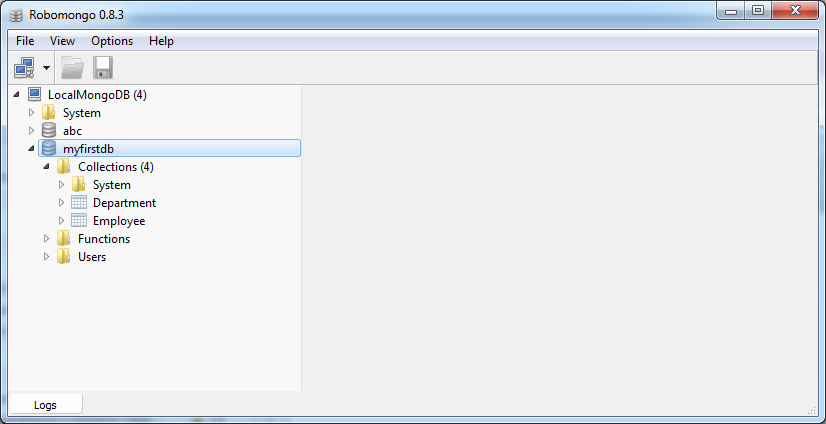
cd C:\DevPrograms\MongoDB\bin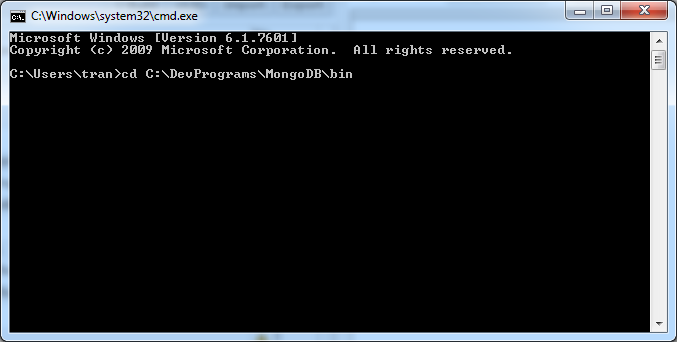
mongodump -d myfirstdb -o C:/test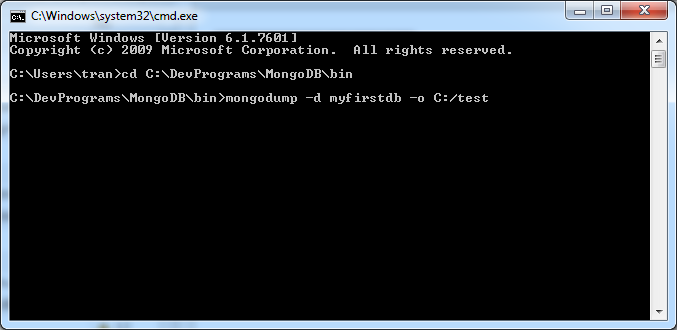
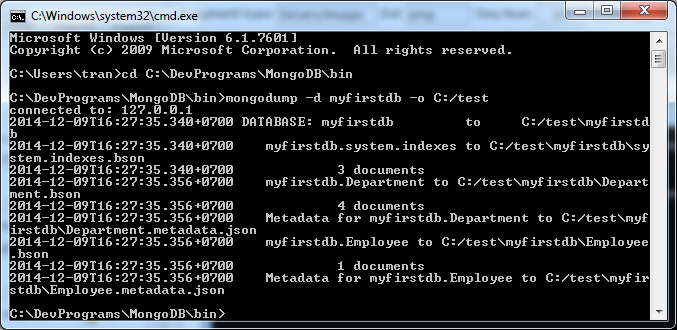
Das Ergebnis, dass der Sub-Ordner myfirstdb in dem Ordner C:/test erstellt wird, der einige File enthaltet
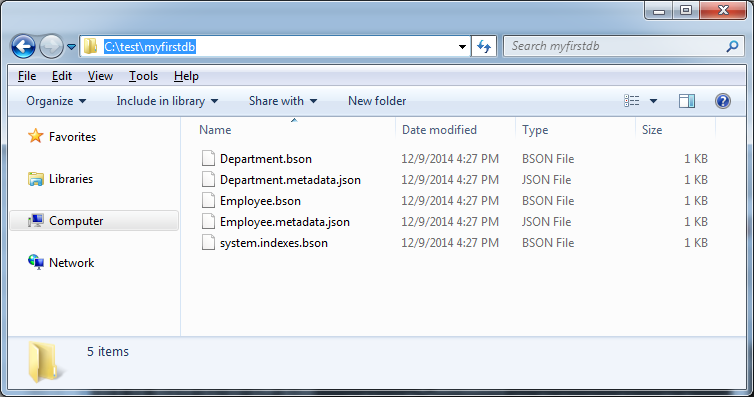
mongorestore
# The simplest syntax to import an entire database.
mongorestore -d database_name path_to_databaseZum Beispiel: Der Ordner C:/test/myfirstdb enthaltet die File, die vorher dump gemacht wird. Wir benutzen sie um in die Database mydb2 zu importieren
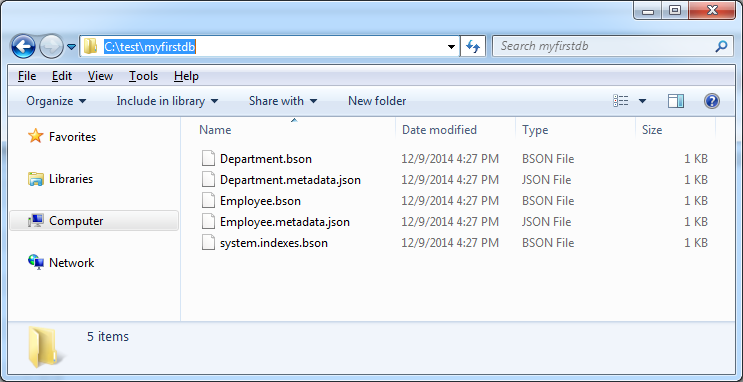
cd C:\DevPrograms\MongoDB\bin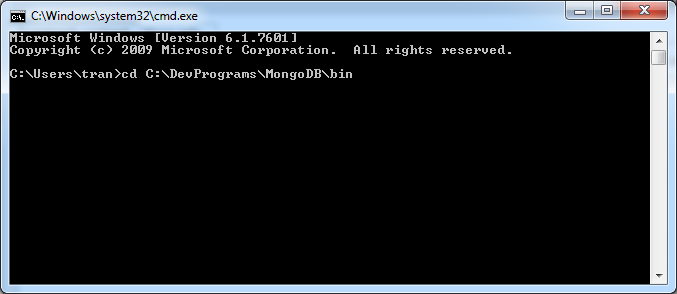
mongorestore -d mydb2 C:\test\myfirstdb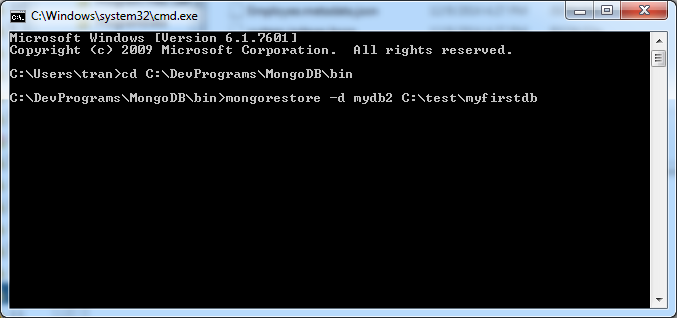

Das Ergebnis auf dem visuellen Tool RoboMongo:
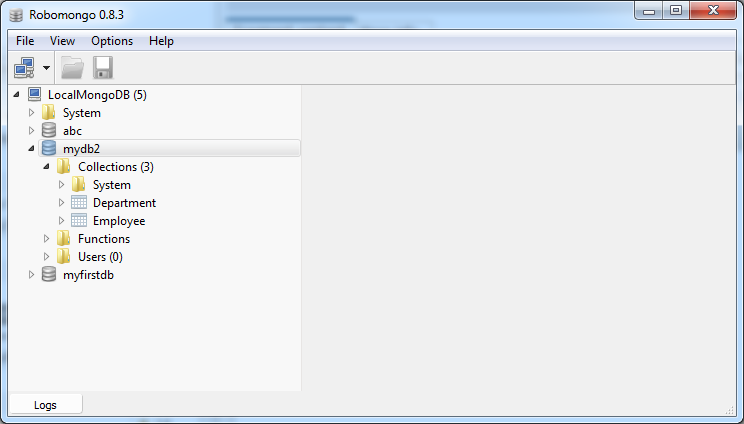
Andere Datenbanken
- Installieren Sie die MongoDB-Datenbank unter Windows
- Installieren Sie RoboMongo unter Windows
- Import und Export von MongoDB Datenbank
- Installieren Sie die HSQLDB-Datenbank unter Windows
- Konfigurieren von HSQLDB DataSource mit Data Source Explorer
- Installieren Sie die H2-Datenbank und verwenden Sie H2 Console
Show More